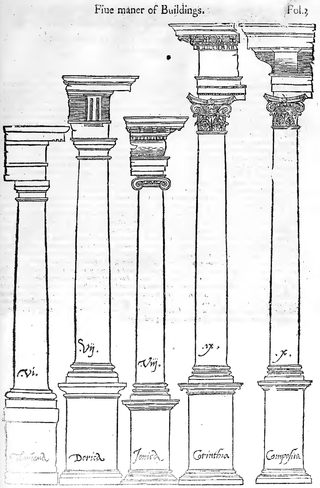
Classical architecture usually denotes architecture which is more or less consciously derived from the principles of Greek and Roman architecture of classical antiquity, or sometimes more specifically, from the works of the Roman architect Vitruvius. Different styles of classical architecture have arguably existed since the Carolingian Renaissance, and prominently since the Italian Renaissance. Although classical styles of architecture can vary greatly, they can in general all be said to draw on a common "vocabulary" of decorative and constructive elements. In much of the Western world, different classical architectural styles have dominated the history of architecture from the Renaissance until World War II. Classical architecture continues to inform many architects.

William Butterfield was a British Gothic Revival architect and associated with the Oxford Movement. He is noted for his use of polychromy.

Sir George Gilbert Scott, largely known as Sir Gilbert Scott, was a prolific English Gothic Revival architect, chiefly associated with the design, building and renovation of churches and cathedrals, although he started his career as a leading designer of workhouses. Over 800 buildings were designed or altered by him.

Sir Nikolaus Bernhard Leon Pevsner was a German-British art historian and architectural historian best known for his monumental 46-volume series of county-by-county guides, The Buildings of England (1951–74).

Leckhampstead is a village and civil parish in the unitary authority area of Buckinghamshire, England. It is near the boundary with Northamptonshire, about 3 miles (5 km) north east of Buckingham, and west of Milton Keynes. The village is on the River Leck, a tributary of the River Great Ouse.

Woodstock is a market town and civil parish, 8 miles (13 km) north-west of Oxford in West Oxfordshire in the county of Oxfordshire, England. The 2011 Census recorded a parish population of 3,100.

In church architecture, the chancel is the space around the altar, including the choir and the sanctuary, at the liturgical east end of a traditional Christian church building. It may terminate in an apse.
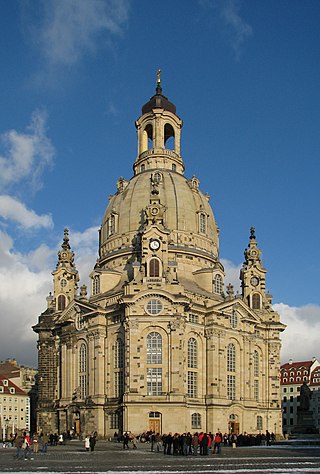
George Bähr was a German architect.

Croughton is a village and civil parish in West Northamptonshire, England, about 3 miles (5 km) southwest of Brackley. The 2011 Census recorded the parish's population as 992.
John Brown (1805–1876) was a 19th-century architect working in Norwich, in the county of Norfolk, England. His buildings include churches and workhouses.
A rondel is a verse form originating in French lyrical poetry of the 14th century. Specifically, the rondel refers to "a form with two rhymes, three stanzas, and a two-line refrain that repeats either two and a half or three times: ABba abAB abbaA(B)."
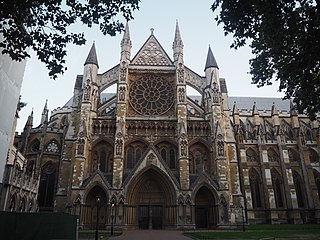
Edward Stanton (1681–1734) was an English stonemason, builder and sculptor.

A church porch is a room-like structure at a church's main entrance. A porch protects from the weather to some extent. Some porches have an outer door, others a simple gate, and in some cases the outer opening is not closed in any way.
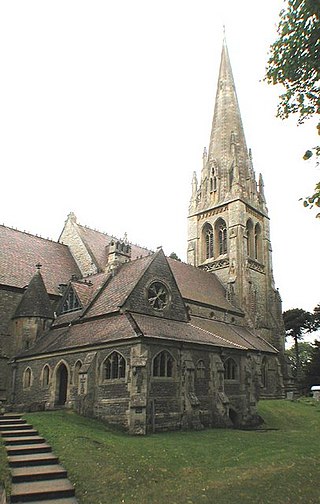
Henry Woodyer (1816–1896) was an English architect, a pupil of William Butterfield and a disciple of A. W. N. Pugin and the Ecclesiologists.

William Wilkinson (1819–1901) was a British Gothic Revival architect who practised in Oxford, England.
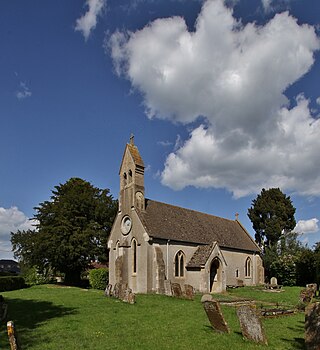
Newton Purcell is a village in the civil parish of Newton Purcell with Shelswell, in the Cherwell district, in the county of Oxfordshire, England, 4+1⁄2 miles (7 km) southeast of Brackley in neighbouring Northamptonshire. The 2001 Census recorded a parish population of 103. The parish population from the 2011 Census is not available.
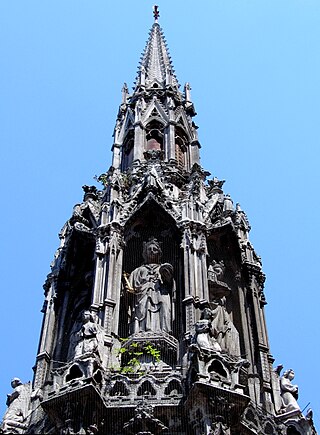
Thomas Earp (1828–1893) was a British sculptor and architectural carver who was active in the late 19th century. His best known work is his 1863 reproduction of the Eleanor Cross which stands at Charing Cross in London. He specialised in sculpture for Gothic Revival churches and worked closely with the architect George Edmund Street in the 1860s and 1870s.
William Slater was an English architect who was born in Northamptonshire and practised in London. He oversaw restoration of many churches, latterly in partnership with R. H. Carpenter.
Thomas Speght was an English schoolmaster and editor of Geoffrey Chaucer.






















